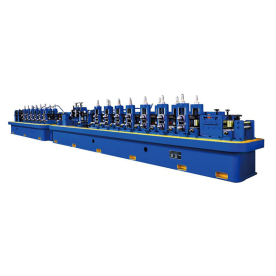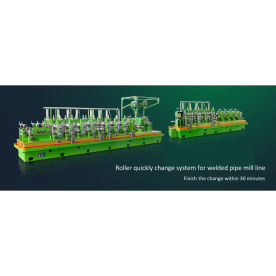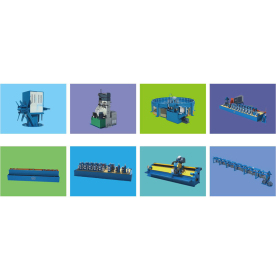[Pipe mill production line with quality control measures]Ensuring Excellence in Manufacturing: Quality Control Measures in Pipe Mill Production Line for Optimal Performance and Durability
News 2024-11-7
In the competitive landscape of steel manufacturing, ensuring the quality of products is critical for sustaining business growth and maintaining customer trust. One of the most important components of the steel industry is the pipe mill production line. This advanced manufacturing process is designed to produce pipes used in various applications, from construction to oil and gas infrastructure. However, with the increasing demand for high-quality pipes, the implementation of stringent quality control measures has become imperative. This article explores the significance of quality control measures within the pipe mill production line and their impact on product excellence.
The pipe mill production line typically consists of several intricate processes, including coil preparation, forming, welding, sizing, and final inspection. Each of these stages plays a vital role in determining the overall quality and performance of the finished product. To maintain high standards across all stages, manufacturers must employ comprehensive quality control measures that encompass both in-process testing and final inspection.
One of the fundamental quality control measures in a pipe mill production line is material selection. High-quality steel is essential for producing strong and durable pipes. Manufacturers must ensure that incoming raw materials meet strict specifications and standards. This initial step often involves rigorous testing for mechanical properties, chemical composition, and surface quality. Using low-quality materials can lead to defects that compromise the integrity of the final product, making the selection process crucial.
During the manufacturing process, quality control measures should be integrated at each stage. For instance, before forming the pipes, the coils must be checked for flatness and surface imperfections. Any defects in the coil can adversely affect the forming process, leading to irregular shapes or weakened sections in the pipe. Implementing non-destructive testing methods, such as ultrasonic or eddy-current testing, can help identify flaws early in the production process, allowing manufacturers to take corrective actions before proceeding further.

Ensuring Excellence in Manufacturing: Quality Control Measures in Pipe Mill Production Line for Optimal Performance and Durability

Ensuring Excellence in Manufacturing: Quality Control Measures in Pipe Mill Production Line for Optimal Performance and Durability

Ensuring Excellence in Manufacturing: Quality Control Measures in Pipe Mill Production Line for Optimal Performance and Durability
In addition to these technical measures, fostering a culture of quality within the workforce is essential for the successful implementation of quality control measures. Regular training and development programs should be provided to ensure that employees are knowledgeable about quality standards, testing methods, and the importance of their role in maintaining product quality. Encouraging open communication and feedback can also help identify potential issues and areas for improvement.
In conclusion, the integration of quality control measures within the pipe mill production line is paramount for producing high-quality pipes that meet customer expectations and industry standards. By focusing on material selection, in-process inspections, automated testing, and fostering a strong quality-centric workplace culture, manufacturers can enhance their product offerings and establish a reputation for excellence in the marketplace. As the demand for reliable and durable pipes continues to grow, investing in quality control will be a key factor in achieving long-term success in the pipe manufacturing industry.
